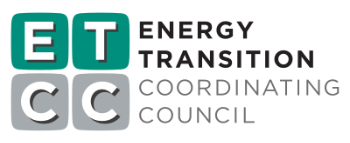Project Info
ACTIVE
Project Title
PCM Enhanced Ceilings
Project Number ET25SWE0012 Organization SWE (Statewide Electric ETP) End-use HVAC Sector Other Project Year(s) 2025 - 2026Description
This project demonstrates the energy-saving benefits of phase change material (PCM) in drop ceilings to reduce cooling energy in California schools, where HVAC systems account for 50% of energy use (Energy Information Administration, 2018). Cooling dominates HVAC loads in warm classrooms due to high internal gains from dense student occupancy (Pistochini et al., 2022). PCM technology stores thermal energy by transitioning between solid and liquid phases at a designed temperature—71°F in this project—offering a passive, efficient way to reduce cooling loads.PCM integrates well with HVAC systems equipped with outside air economizers. These systems, controlled by a Building Automation System (BAS), ventilate buildings during early morning hours to freeze the PCM. Based on data from PCM research, PCM can store 35–50 BTU/sf, reducing cooling loads by 3–4.3 ton-hours daily for a 1,000-sf classroom. With an average cooling energy intensity of 1 kWh/ton-hour, this equates to 300–430 kWh savings annually, or approximately 15–20% of the national average cooling energy use for classrooms (Energy Information Administration, 2018). PCM ceiling tiles seamlessly integrate with existing tiles, requiring no visual changes to classrooms.Beyond energy savings, PCM offers co-benefits. Frozen PCM provides temporary cooling during HVAC outages or power failures. It also stabilizes surface temperatures, enhancing thermal comfort (Pistochini et al., 2024). Additionally, PCM installation can reduce noise transfer from rooftop HVAC units, addressing teacher complaints about noise interfering with learning (Outcault et al., 2022).This project involves a field demonstration at a high school in Sunnyvale, CA, comparing classrooms with and without PCM. Three scenarios will be evaluated: (1) no PCM, no nighttime ventilation; (2) no PCM, with nighttime ventilation; and (3) PCM with nighttime ventilation to freeze the material. EnergyPlus models will be adapted and validated using field data (Pistochini et al., 2018, 2024) to quantify cooling energy reductions and load-shedding potential. Successful results could support statewide benefit projections in future projects.The project addresses TPMs:- HVAC: Commercial scalable thermal storage (medium): Building mass thermal storage: Performance validation- Envelope: Thermal mass additions and improvements (medium): Thermal mass additions and improvements: Performance validationThis project addresses the need for building mass thermal storage performance validation under the HVAC thermal storage research initiative. Field data will provide a case study and validate an EnergyPlus classroom model, which incorporates prior efforts on PCM performance validated with lab data (Pistochini et al., 2024). If successful, the tools can forecast statewide benefits in future projects.The study will develop and demonstrate a simple, rule-based control strategy to freeze PCM using nighttime ventilation, a critical but often neglected factor in achieving HVAC energy savings. Field demonstrations will explore cost and control complexity barriers, aligning with identified challenges in thermal storage integration. By leveraging PCM integration with building automation systems, the project aims to validate scalable solutions, enable accurate savings estimates, and support future adoption. The results will contribute to broader PCM implementation in classrooms, supported by potential utility incentives and field-tested benefits.
